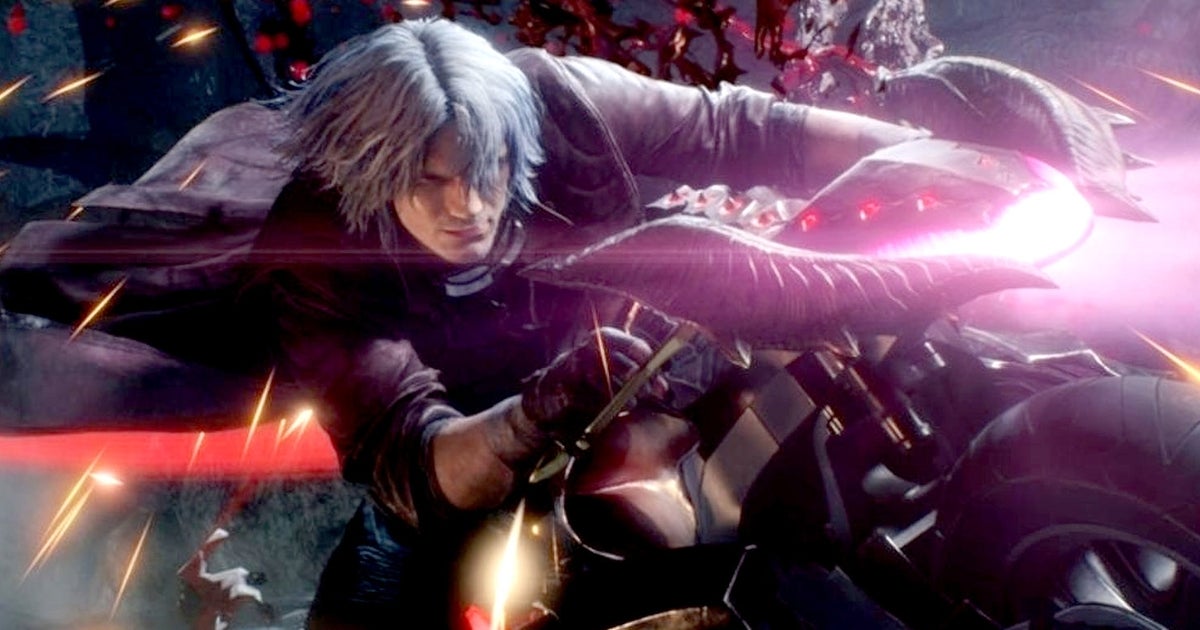-
Hey, guest user. Hope you're enjoying NeoGAF! Have you considered registering for an account? Come join us and add your take to the daily discourse.
You are using an out of date browser. It may not display this or other websites correctly.
You should upgrade or use an alternative browser.
You should upgrade or use an alternative browser.
DF - Assassin's Creed Valhalla: PS5 vs Xbox Series X/ Series S Next-Gen Comparison!
killatopak
Member
AC has marketing deal with Xbox.How about the possibility that the devs simply put more effort into the Ps5 version, because its obviously the far more popular console,selling more software ? Horizon Zero Down had a lot issues on pcs far more powerfull than the Ps4, what was the reason again?
Coulomb_Barrier
Member
XSX version have better textures

Xbox Discord group FUD has arrived.
This is why you can't take their "tech knowledge" as gospel. There are far more design decisions going on under the PS5's hood, that does not come down to just... tOoLs. Which the APIs and pipelines evolve and improve for both companies throughout an entire gen.
The thing I don't get is that we have facts about PS5 having higher pixel & triangle output but DF refuse to explain this to people
Last edited:
Completely ignoring his point, well done good sir!AC has marketing deal with Xbox.
Last edited:
killatopak
Member
His point is stupid and so are you.Completely ignoring his point, well done good sir!
ThatOneGrunt
Member
Series X issues read the same to me as the PC issues that people are having right now.
DeepEnigma
Gold Member
It can still be locked to vsync and stutter then it can't hold the frame rate. How is that so hard to understand?
If it can't hold the framerate, then it is not LOCKED Hz/Framerate now is it?
Handy Fake
Member
Xbox is pretty dicked with those fixes mind.Series X issues read the same to me as the PC issues that people are having right now.
Looks like it'll have to be patched and downgraded.
Last edited:
DeepEnigma
Gold Member
Series X issues read the same to me as the PC issues that people are having right now.
Maybe they should not have CRTL-C to CRTL-V on the PC then, eh?
Or does the PC have poor tools too?
Bo_Hazem
Banned
Maybe they should not have CRTL-C to CRTL-V on the PC then, eh?
Or does the PC have poor tools too?
Both have this software:

mitchman
Gold Member
No, but you talked about a "proper vsync", whatever that is. vsync is a feature of the API to ensure frames are delivered at fixed intervals, and if that interval is not reached, the frame is output at the next vsync 16.6ms (60fps) later, or with AC Valhalla, it's output immediately causing tearing. You seem to mix up vsync and locked 60fps.If it can't hold the framerate, then it is not LOCKED Hz/Framerate now is it?
Last edited:
meech
Member
So? Do you know the content of that deal , do you seriously believe they set terms about developing effort? Its most likely about smart delivery, thats it.AC has marketing deal with Xbox.
Last edited:
kuncol02
Banned
Our sales department once sold app which was in state of "we only have early draft of UI design and nothing more". Client is happy and is using it for few years now.Sadly, it's the way it goes in the development industry. I cannot count how many screenshots, or videos i've provided to marketing of an unfinished product.
It get's finished before launch obviously, but it's just the way shit goes.
DeepEnigma
Gold Member
No, but you talked about a "proper vsync", whatever that is. vsync is a feature of the API to ensure frames are delivered at fixed intervals, and if that interval is not reached, the frame is output at the next vsync 16.6ms (60fps) later, or with AC Valhalla, it's output immediately causing tearing. You seem to mix up vsync and locked 60fps.
When the framerate is locked with vsync on, it's nice and smooth and tried & true for well over a decade now.
That is all I said. You are thinking way too deep into this.
Physiognomonics
Member
Yes, for them it's:The thing I don't get is that we have facts about PS5 having higher pixel & triangle output but DF refuse to explain this to people
like if it could be patched later (and notice how they write this just after the mention of bugs, like if was also some kind of bug, clever).We encountered plenty of bugs playing this game: in addition to weird performance bottlenecks on Series consoles
Back in 2014 with AC Unity, they were so happy to hypothesize all sort of hardware deficiencies on PS4: CPU too slow, or a problem with the memory. Anything that could never be patched on PS4 (when actually the problem was patched by Ubisoft later).
But here, it's just some odd and unexplained phenomenom (so Ubisoft will inevitably patch it). But as you say we know plenty of things that could explain it, but they'll never acknowledge it.
Last edited:
Radical_3d
Member
It’s already my case. Most of the XOX vs PS4Pro were already indistinguishable for me with some exceptions like RDR2.Mark my words. Six months or more from now, you won't tell PS5 and SX games apart with the naked eye.
killatopak
Member
You don’t market something you expect not to sell. Just use common sense.So? Do you know the content of that deal , do you seriously believe they set terms about develope effort in a marketing deal? Its most likely about smart delivery, thats it.
So many conspiracy theories.
Okay how do you explain XSX doing better on DMCV then? Every other game is using BC mode and only Capcom can use the Xbox fully?
ethomaz
Banned
PS5 is doing better in DMC 5.You don’t market something you expect not to sell. Just use common sense.
So many conspiracy theories.
Okay how do you explain XSX doing better on DMCV then? Every other game is using BC mode and only Capcom can use the Xbox fully?
killatopak
Member
In just the 120fps mode.PS5 is doing better in DMC 5.
In the other two modes, Xbox performs better as seen in the DF head to head.
ethomaz
Banned
The only one not capped that shows the performance of the system?In just the 120fps mode.
In the other two modes, Xbox performs better as seen in the DF head to head.
BTW if you thing the Xbox did that better in all the others modes you really did not watch or read the analysis.
Graphic Mode: Xbox small advantage (5-8%?
Performance Mode: PS5 big advantage (20+%)
RT Graphic Mode: very very small Xbox advantage (2-3%?)
RT Performance Mode: tie

Devil May Cry 5: Special Edition - the first PS5 vs Xbox Series X platform comparison
It's finally happening. Ever since Microsoft and Sony revealed the hardware specifications of Xbox Series X and PlaySta…
It did a bit better in two modes... vs way bitter in a single mode.
Last edited:
FranXico
Member
I remember this. That 9% upclock on a puny Jaguar CPU somehow was supposed to play a big role on that game's performance. LOLBack in 2014 with AC Unity, they were so happy to hypothesize all sort of hardware deficiencies on PS4: CPU too slow, or a problem with the memory. Anything that could never be patched on PS4 (when actually the problem was patched by Ubisoft later).
FranXico
Member
By 8% at most, as opposed to 30% max difference now.In just the 120fps mode.
In the other two modes, Xbox performs better as seen in the DF head to head.
Handy Fake
Member
How dare we discuss it in a comparison thread. BURN THE HERETICS.Give it a rest guys. Stop embarrassing yourself over a piece of plastic. Not a single one of us has any idea why Xbox is performing worse than PS5.
It's not discussion which is the issue.How dare we discuss it in a comparison thread. BURN THE HERETICS.
The expectations of Xbox fans is just unrealistic. XSX is not that far from PS5 and few patches should bring the difference to minimum. It's the resistance to accept that PS5 and XSX are going to provide similar performance and not the "most powerful console" experience on XSX is just downright hilarious. This turns the discussion to fanboy war.
Legenscary
Member
The only one not capped that shows the performance of the system?
BTW if you thing the Xbox did that better in all the others modes you really did not watch or read the analysis.
Graphic Mode: Xbox small advantage (5-8%?
Performance Mode: PS5 big advantage (20+%)
RT Graphic Mode: very very small Xbox advantage (2-3%?)
RT Performance Mode: tie

Devil May Cry 5: Special Edition - the first PS5 vs Xbox Series X platform comparison
It's finally happening. Ever since Microsoft and Sony revealed the hardware specifications of Xbox Series X and PlaySta…www.eurogamer.net
It did a bit better in two modes... vs way bitter in a single mode.
That's an interesting spin on the data and a peculiar way to ignore the sentiment explicitly stated by the author. That mode, the high performance one you're quoting, is going to run at 1080p or 1440p on the vast majority of consumer television sets. From Digital Foundry:
"This is great for seeing top-end performance metrics, but it's bad news for the experience - especially on PlayStation 5. This is because 120Hz output is locked to any screen that supports 120Hz, no matter the resolution. So consider a highly popular 4K screen - the LG OLED B8. PS5 sees that it is 120Hz-compatible, and overrides 4K resolution. All modes will run at a 120Hz refresh rate, at 1080p resolution - which is absolutely not ideal. Another popular screen is the Samsung NU8000. It's a 4K screen but on PS5, Devil May Cry will force through the 120Hz refresh rate instead, resulting in a downscale to 1440p that the user has no control over.
And this is where Xbox Series X has an advantage that's crucial. Users can simply dip into the video settings, select 60Hz and Devil May Cry 5 runs in a generally stable way - a locked 60 frames per second is very much preferable to the fully unlocked set-up on a 120Hz screen whether you're gaming on PS5 or Xbox Series X. We have shared our findings with Capcom a while back, and fingers crossed there'll be a solution to the issue, but the tl;dr version is simple enough on paper: allow PS5 users to select between 60Hz and 120Hz output resolution.
So a more accurate way to interpret that review would be, assuming 4k is the yardstick we're measuring next-gen titles by, is the Series X has an advantage at 4k with the vast majority of existing consumer Television sets. With the performance mode, it's not clear to anyone at this point that these gaps in performance won't disappear with future patches:
"It's conjecture on our part, but there is the sense that there's a graphics API bottleneck here that impacts performance on the Xbox side in some scenarios, while PS5 simply powers on."
ethomaz
Banned
We are talking about performance yet, no?That's an interesting spin on the data and a peculiar way to ignore the sentiment explicitly stated by the author. That mode, the high performance one you're quoting, is going to run at 1080p or 1440p on the vast majority of consumer television sets. From Digital Foundry:
"This is great for seeing top-end performance metrics, but it's bad news for the experience - especially on PlayStation 5. This is because 120Hz output is locked to any screen that supports 120Hz, no matter the resolution. So consider a highly popular 4K screen - the LG OLED B8. PS5 sees that it is 120Hz-compatible, and overrides 4K resolution. All modes will run at a 120Hz refresh rate, at 1080p resolution - which is absolutely not ideal. Another popular screen is the Samsung NU8000. It's a 4K screen but on PS5, Devil May Cry will force through the 120Hz refresh rate instead, resulting in a downscale to 1440p that the user has no control over.
And this is where Xbox Series X has an advantage that's crucial. Users can simply dip into the video settings, select 60Hz and Devil May Cry 5 runs in a generally stable way - a locked 60 frames per second is very much preferable to the fully unlocked set-up on a 120Hz screen whether you're gaming on PS5 or Xbox Series X. We have shared our findings with Capcom a while back, and fingers crossed there'll be a solution to the issue, but the tl;dr version is simple enough on paper: allow PS5 users to select between 60Hz and 120Hz output resolution.
So a more accurate way to interpret that review would be, assuming 4k is the yardstick we're measuring next-gen titles by, is the Series X has an advantage at 4k with the vast majority of existing consumer Television sets. With the performance mode, it's not clear to anyone at this point that these gaps in performance won't disappear with future patches:
"It's conjecture on our part, but there is the sense that there's a graphics API bottleneck here that impacts performance on the Xbox side in some scenarios, while PS5 simply powers on."
Because you having the choice to choose a locked 60fps means nothing for a performance comparison...
I agree a locked 60fps is preferable over a unlocked framerate with big variations.
But if you want to compare performance the unlocked framerate mode is the best deal and shows which console is doing best.
They are very clear... "PS5 simply power on".
Last edited:
Fbh
Member
XSX is the new PS3. Instead of waiting to unlocked the multiplatform power of the cell, now it's tools.
Also interesting. PS5 is the first console to max out its "tools" at launch. No improvements will ever come!
The funny part is that it's all irrelevant. Because as soon as devs really start using that DirectX12 on the base Xbox One it's going to jump straight to the top of the performance ladder.
Legenscary
Member
We are talking about performance yet, no?
We are talking about performance, but you're twisting yourself into knots trying to take a game that currently performs better for the vast majority of users on the Series X and frame it as performing better on the Playstation 5. There's plenty of other games where the PS5 is trouncing the Xbox. It's a bit fanboyish to borrow data from a digital foundry article and use it to conclude the exactly opposite of what the article is claiming.
ethomaz
Banned
It indeed perform better on PS5.We are talking about performance, but you're twisting yourself into knots trying to take a game that currently performs better for the vast majority of users on the Series X and frame it as performing better on the Playstation 5. There's plenty of other games where the PS5 is trouncing the Xbox. It's a bit fanboyish to borrow data from a digital foundry article and use it to conclude the exactly opposite of what the article is claiming.
The article straight says it.
You have the option to make Xbox smooth locking the framerate to 60fps while there is no option on PS5 (they even questioned Capcom about that).
But even locked it is running at lower performance than PS5.
People tries to say only AC has issues with Xbox when in fact all new multiplatform games analysed until now have better performance on PS5.
Last edited:
Legenscary
Member
It indeed perform better on PS5.
The article straight says it.
You have the option to make Xbox smooth locking the framerate to 60fps while there is no option on PS5 (they even questioned Capcom about that).
But even locked it is running at lower performance than PS5.
People tries to say only AC has issues with Xbox when in fact all new multiplatform games analysed until now have better performance on PS5.
No, locked 60fps at 4k it has a 5-8% advantage. I'm just gonna quote you here again because why not?
Graphic Mode: Xbox small advantage (5-8%?

Devil May Cry 5: Special Edition - the first PS5 vs Xbox Series X platform comparison
It's finally happening. Ever since Microsoft and Sony revealed the hardware specifications of Xbox Series X and PlaySta…www.eurogamer.net
It did a bit better in two modes... vs way bitter in a single mode.
Give it a rest guys. Stop embarrassing yourself over a piece of plastic. Not a single one of us has any idea why Xbox is performing worse than PS5.
Who you talking to? I been saying it for months
megreotsugua
Banned
Give it a rest guys. Stop embarrassing yourself over a piece of plastic. Not a single one of us has any idea why Xbox is performing worse than PS5.
This is the problem. Bottlenecked CUs.

ethomaz
Banned
That is not the 120Hz mode with the locked 60fps the guy I quoted said lolNo, locked 60fps at 4k it has a 5-8% advantage. I'm just gonna quote you here again because why not?
That is the quality mode... yes the quality mode is 5-8% more on Xbox.
The 120Hz (Performance Mode) locked at 60Hz on Xbox is what the guy was talking about.
Last edited:
Bo_Hazem
Banned
XSX version have better textures

Differences in game's visual make-up essentially disappear completely once we move onto PlayStation 5 and Xbox Series X, where Ubisoft aims for total platform parity and basically delivers that. After a range of tests, there's simply nothing to separate the two in terms of what the game is rendering: level of detail transitions in character quality, tessellation distance and trees and terrain are identical, while shadow resolution is similarly the same. We couldn't find any differences at all in fully matched scenarios and any variations that may have been reported may well be down to the time of day system, which sees lighting adjust dramatically according to the sun's position in the sky (or indeed its absence at night time).

Assassin's Creed Valhalla PS5 vs Xbox Series X - which copes best with 60fps?
For many, this is the most crucial of the next generation cross-platform comparisons. The new Assassin's Creed is a big…
Bo_Hazem
Banned
[UPDATE: The 15 per cent performance advantage mentioned here is averaged across a specific cross-section of play. As the graphs show, 'in the moment' differences can be as high as 25 per cent.]

 www.eurogamer.net
www.eurogamer.net
 Fake
Fake

Assassin's Creed Valhalla PS5 vs Xbox Series X - which copes best with 60fps?
For many, this is the most crucial of the next generation cross-platform comparisons. The new Assassin's Creed is a big…
I love everyone furiously ignore PS5 superior bandwidth speed for half of console. Making %60 console run faster and %40 slower is terrible design decision , they did same thing with Xbox One as well.
So PS5 GPU/Memory is consistently faster 16 GB i would say even though 10 GB of xbox is slightly faster. It is not consistent
So PS5 GPU/Memory is consistently faster 16 GB i would say even though 10 GB of xbox is slightly faster. It is not consistent
Batiman
Banned
It’s like 4 people circle jerking a multi platform launch game as if it indicates anything.Give it a rest guys. Stop embarrassing yourself over a piece of plastic. Not a single one of us has any idea why Xbox is performing worse than PS5.
assurdum
Banned
I suspect more most the ideas exposed don't like you.Give it a rest guys. Stop embarrassing yourself over a piece of plastic. Not a single one of us has any idea why Xbox is performing worse than PS5.
Last edited:
assurdum
Banned
It's like 4 people circle jerking as it means nothingIt’s like 4 people circle jerking a multi platform launch game as if it indicates anything.
Last edited:
Bo_Hazem
Banned
It’s like 4 people circle jerking a multi platform launch game as if it indicates anything.

MiyazakiHatesKojima
Banned
[UPDATE: The 15 per cent performance advantage mentioned here is averaged across a specific cross-section of play. As the graphs show, 'in the moment' differences can be as high as 25 per cent.]

Assassin's Creed Valhalla PS5 vs Xbox Series X - which copes best with 60fps?
For many, this is the most crucial of the next generation cross-platform comparisons. The new Assassin's Creed is a big…www.eurogamer.net
Fake

Bo_Hazem
Banned
Actually it's more than 30.4%. 60fps vs 46fps is 30.4%, but locked 60fps usually means 60fps+. So to be accurate they should say more than 30.4%.
Last edited:
MiyazakiHatesKojima
Banned
Cerny.Actually it's more than 30.4%. 60fps vs 46fps is 30.4%, but locked 60fps usually means 60fps+. So to be accurate they should say more than 30.4%.
Enough said
assurdum
Banned
Speaking seriously I have really this feeling. Not to say multiplat will be tragic as on PS3 but I wouldn't be surprised if series X starts to show better multiplat quite later & in a moderate way as PS3 did in the exclusives.XSX is the new PS3. Instead of waiting to unlocked the multiplatform power of the cell, now it's tools.
Also interesting. PS5 is the first console to max out its "tools" at launch. No improvements will ever come!
Last edited:
Romulus
Member
The funny part is that it's all irrelevant. Because as soon as devs really start using that DirectX12 on the base Xbox One it's going to jump straight to the top of the performance ladder.
And thats not counting the power of the cloud!!

